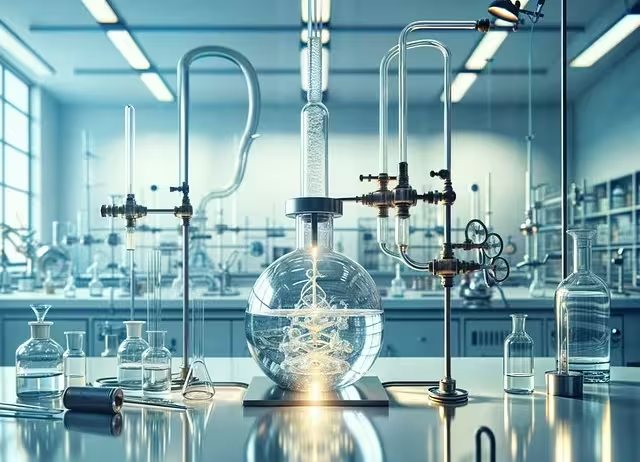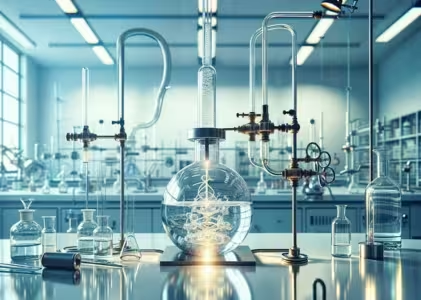Imagine a process that will help to separate the very constituents of air we breathe into pure usable gases. Well, this is not science fiction, but a very exciting scientific process called fractional distillation of liquefied air. It’s an advanced method that makes it possible to recover from the atmosphere very valuable gases, which can then be prepared for very diversified applications. Now, let’s get down to business and see how this complicated yet incredibly effective procedure unfolds, step by step.
1. Air Filtration and Compression
The process of fractional distillation commences by collecting the air. The air essentially contains nitrogen, oxygen, argon, and other gases. It is filtered at the outset to eliminate dust and other impurities from it. To put it simply, the air has to be properly cleaned off before doing anything else.
Afterwards, the air gets compressed to high pressure, usually of the order of 100 times atmospheric pressure. Compression allows not only easier control but also facilitates subsequent cooling and liquefaction. Consider this the packing process before any big journey, making sure the air is ready for the arduous journey ahead.
2. Cooling and Liquefaction
The air is compressed and then subjected to very low temperatures through a process called cryogenic cooling, where engineers make it pass through a series of heat exchangers and expanders. These heat exchangers and expanders progressively lower the temperature of the air until it reaches almost -200 degrees Celsius.
At such an extremely low temperature, this extreme cooling makes the air liquefy, thus transforming it from its gaseous form to its liquid state. It is similar to changing water vapour into liquid water by cooling it, but at much lower temperatures. Now, all of the constituents of atmospheric air are present in the liquid air, only in a much more concentrated and more easily handled form
3. Fractional Distillation in a Distillation Column
Now, the core of the process begins—the fractional distillation. This liquidized air is fed into a distillation column, a tall structure usually divided into a number of sections or trays. The column works on the basis of boiling points. Each gas in the liquidized air has a different boiling point, such as nitrogen: -196°C; oxygen: -183°C; and argon: -186°C.
Operators warm up the liquidized air gradually, causing the gases to boil off at different temperatures. As they do so, nitrogen reconverts to its gaseous state earliest, and because of its highest boiling point, it rises to the top of the column where they collect it. Next, oxygen and argon follow in that order, and the separation process collects them at various places along the column.
The differing boiling points facilitate this separation, enabling the gases to be separated in their pure states. The process can be imagined as a refinement of sorting, where every gas is individually extracted due to its distinct traits.
4. Collection and Storage
The separated gases are then collected and stored in high-pressure containers. Now, these pure gases can be used for a multitude of industries, medical uses, and scientific purposes. For example, oxygen is a critical constituent of medical treatments and steel production, nitrogen has extensive applications in food preservation and the production of electronics, while argon remains quite useful in industries associated with welding and lighting.
Scientists and engineers apply these gases to their respective fields, where their properties make them absolutely essential. Warehouse staff carefully store these valuable gases for future use, much like bottling various beverages from one source, to maintain their purity and ensure they are readily available when needed.
5. Quality Control
Quality control teams rigorously check every gas collected to ensure it meets the required purity standards. They remove impurities and certify the gases for their respective uses, guaranteeing their quality and safety. The objective at this step of the process is to obtain high-quality gases which will be safe for each specific application. Like any other good-quality product, those gases have to pass very strict quality checks to ascertain that they will perform in a manner desired.
Conclusion: Fractional Distillation of Liquefied Air
Scientists and engineers perform fractional distillation of liquefied air, transforming the unseen, ubiquitous air around us into very crucial high-purity gases, one of the wonders of modern science. We get the principal components of air through careful filtration, compression, cooling, and subsequent distillation for a myriad of practical uses, from medicine to manufacturing.
It is a complex process that does not only underscore how complex the air is but also shows the ingenuity of human innovation to make the invisible tangible and useable. This technology shoes just exactly how improved our understanding and manipulation of natural resources have become—what endless possibilities when science finds its way into practical application.
For more on CRISPR and Gene Editing, check out the following related articles. CRISPR and Gene Editing: Ethical Implications and Future Views AI in Healthcare – Remoulding medical Diognosis Sustainable Technologies – Protecting the Planet one Innovation at a Time Genetic Engineering – Designing Life From Scratch Climate Change Prevention – A Comprehensive Guide for this CrisisFrequently Asked Questions
What is the fractional distillation of liquefied air used for?
Fractional distillation of liquified air entails the separation of components in air, which include nitrogen, oxygen, and argon, for separation in industrial, medical, and scientific purposes. These gases have very important applications in fields stretching from health care to manufacturing.
Hospitals employ oxygen in respiratory therapies, chemical processing uses nitrogen to create inert atmospheres, and industries utilize argon for high-quality welding and lighting.
How does the Fractional Distillation of Liquefied Air tower work?
It works on the basis of the different boiling temperatures of the gases embedded in liquid air. Operators warm the air, causing nitrogen, oxygen, and argon to boil off at different temperatures. They collect each gas at the appropriate point in the column, separating them effectively.
The designers design the column to efficiently separate the gases, capturing each one in its purest form. The trays or sections of the column create multiple stages of vaporization and condensation, helping to do the exact separation.
Why is cryogenic cooling essential in this process?
This can only occur through cryogenic cooling, which is the process of liquefying air. It is only at a temperature of about –200°C, that this change to the liquid state from its gaseous state takes place upon cooling compressed air; after this, one can apply fractional distillation, separating the components according to boiling point.
Without cryogenic cooling, the necessary conditions for liquefaction and subsequent separation of the said gases cannot be achieved. Extreme cooling is very pivotal to the effectiveness and efficiency of the whole process of distillation.
What are some uses of the gases obtained from the process?
Some of the applications of these obtained gases via fractional distillation are: oxygen in medical therapies and production of steel, nitrogen in food preservation and the electronics industry, while argon finds its uses in welding and lighting industries. Each of these gases possesses certain properties which make them valuable for different uses.
For instance, nitrogen’s inertness makes it suitable for a myriad of uses, such as preventing oxidation in food packaging. On the other hand, oxygen is highly reactive and therefore finds applications in several combustion processes.
How is the purity of the separated gases maintained?
The quality of the separated gases is guaranteed by a very stringent quality control process. Each gas becomes subject to testing for its defined level of purity. Technicians eliminate impurities in order to make the gases effective and safe for their application.The quality control process detects and gets rid of even traces of impurities through state-of-the-art analytical techniques to give the best level of purity and performance for each gas.
References
- Cryogenic Society of America. “Cryogenic Air Separation.” Retrieved from Cryogenic Society.
- Air Products. “How Cryogenic Distillation Works.” Retrieved from Air Products.
- Linde Engineering. “Air Separation Plants.” Retrieved from Linde.
- Encyclopedia Britannica. “Distillation.” Retrieved from Britannica.
- National Institute of Standards and Technology (NIST). “Properties of Gases.” Retrieved from NIST.


